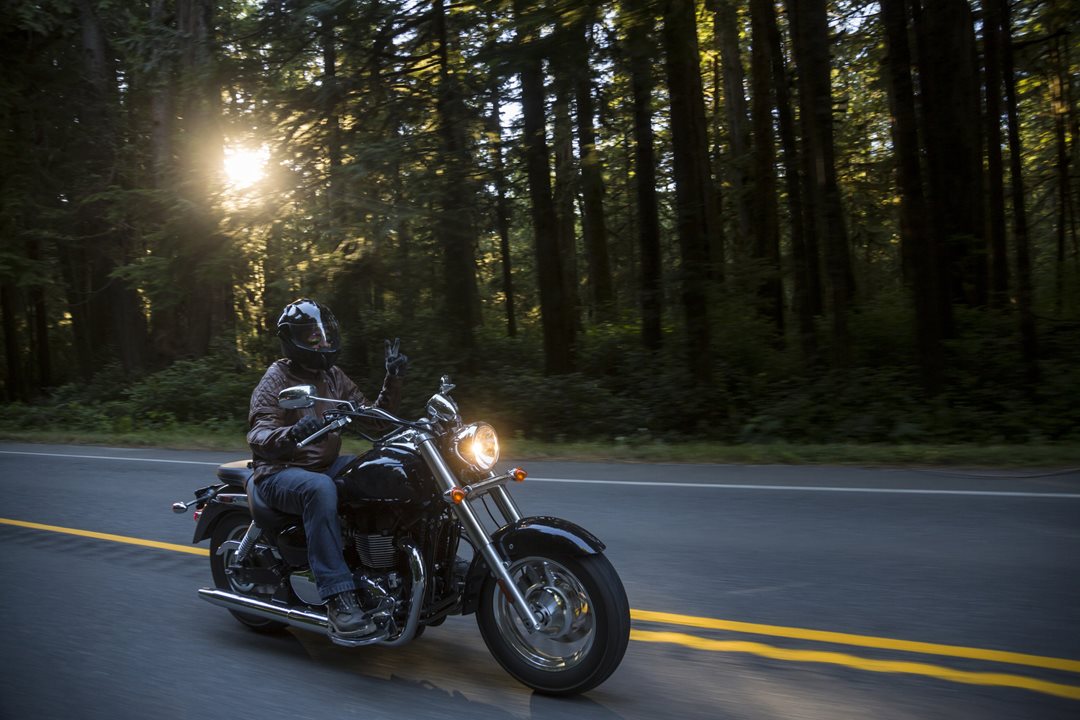5 things motorcyclists want you to know | PEMCO
 For Northwest motorcyclists, the calendar just flipped to the happiest time of year.
For Northwest motorcyclists, the calendar just flipped to the happiest time of year.
Long, reliably dry July days add to the existing list of motorcycle perks—better fuel economy, easier parking, front-of-the-line boarding at ferry crossings, and, of course, pure fun on the open road! But safety? Sadly, it’s not at the top of the list of perks.
July 12 is National Motorcycle Day, and we think it’s a great opportunity to bring motorcycle safety awareness to the forefront. Not just for those who drive them, but for the motorists who share the road with them, too.
Here’s a sobering statistic: Although motorcycles make up only 3% of registered vehicles on the nation's highways, they account for 15% of vehicle fatalities. A motorcyclist is 28% more likely to suffer fatal injuries in a crash than someone riding in a car, according to data from the National Highway Traffic Safety Administration.
Some of that vulnerability comes from just how different the experience of riding a motorcycle is compared to driving a car. Although motorcycles follow basically the same laws, riders say they wished drivers sharing the road understood more about what it's like navigating on two wheels.
Here are the top five things motorcyclists want other drivers on the road to know and keep in mind:
1. Expect unpredictability. When drivers see motorcycles swerve, they may think, "Reckless!" What they can't see, though, is the pothole or cracked pavement the motorcyclist is avoiding.
2. Beware of your blind spot. Because of their relatively small size, motorcycles can disappear quickly from view. That's why it's critical to do a quick double take during lane changes – especially in states that allow lane splitting on freeways (illegal in Washington and Oregon).
3. Add extra following distance. Riders can slow down without using their brakes – meaning drivers won't see a brake light to warn them. Instead of the two-second following-distance rule you may have learned years ago, increase it to a minimum of three or four seconds when you're behind a motorcycle. (And we'd argue that under many Northwest road conditions, two seconds isn't enough for cars, either.)
4. Don't rely on a motorcycle's turn signal. Blinkers on a motorcycle may not turn off automatically like they do in a car. Keep in mind that just because you see a turn signal, it doesn’t mean the motorcycle will be turning ahead.
5. Leave plenty of space when passing. When you pull around a motorcycle to pass, the force of the air current created by your car could be enough to knock a rider off balance.
And for all those scooters you see cruising around Northwest metro areas? Treat the bigger ones (think Vespas) like motorcycles. For the smaller ones (rental e-scooters), apply bicycle rules, giving them a minimum three-foot space bubble. Cities are still sorting out their e-scooter ordinances, so check the rules in your area. Each city is different.
We can help you insure your motorcycle
Like drivers, motorcyclists in Washington and Oregon are required to carry insurance. PEMCO Insurance Agency can offer you a no-obligation quote in just a few minutes. Like PEMCO Mutual, PEMCO Insurance Agency has licensed insurance experts who are standing by, ready to guide you through your insurance journey. PEMCO Insurance Agency can also help you find coverage for your ATV, collector car, motorhome, and more.
Give us a call today at 1-800-MY-PEMCO (1-800-697-3626), get a quote through e-mail at agency.sales@pemco.com, or reach out to your local PEMCO agent. We’re here to help.
Keep driving (and cruising) safe, PNW!
Share on social media